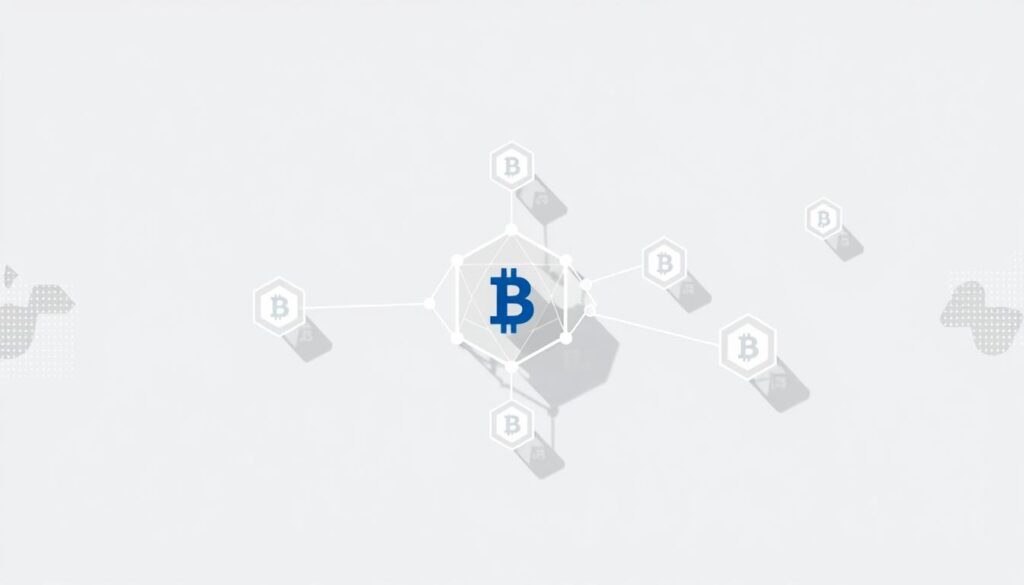Now Reading: Blockchain Interoperability Protocols Comparison: A Detailed Analysis
- 01
Blockchain Interoperability Protocols Comparison: A Detailed Analysis
Blockchain Interoperability Protocols Comparison: A Detailed Analysis

Today’s digital landscape features thousands of isolated ledger systems. These separate networks create operational silos that slow down innovation and efficiency. Connecting these systems is no longer a luxury but a strategic necessity for businesses.
The market for connection technologies is exploding. Projections show growth from hundreds of millions to billions of dollars within a decade. This signals massive enterprise demand for effective cross-chain solutions.
This guide provides a clear analysis for technical leaders and enterprises. We examine the leading approaches for linking different distributed ledgers. Our focus is on practical insights for real-world implementation decisions.
You will gain a deep understanding of technical designs, security aspects, and cost factors. We cover everything from financial services to supply chain applications. This analysis prepares you to make informed choices for your organization’s needs.
Key Takeaways
- Isolated digital ledgers create major operational challenges for modern businesses.
- The market for connection solutions is experiencing rapid, multi-billion dollar growth.
- Effective cross-chain connectivity is a strategic imperative across industries.
- This analysis provides a practical framework for evaluating different technical approaches.
- The comparison covers critical factors like security, use cases, and implementation costs.
- Over 70% of financial institutions are actively exploring these technologies.
- The goal is to empower decision-makers with actionable insights for their projects.
Introduction to Blockchain Interoperability
Modern businesses face significant challenges with separate distributed ledger systems that lack connectivity. These isolated platforms create operational barriers that hinder growth and innovation across industries.
Defining Interoperability in Blockchain
This capability enables different digital ledger networks to exchange information and transfer value seamlessly. It allows distinct systems to communicate without centralized control or manual processes.
The concept addresses fragmentation across various platforms with unique technical designs. It transforms standalone networks into an integrated ecosystem where data flows freely.
Importance for Modern Enterprises
For organizations, this connectivity represents a strategic advantage that unlocks collaboration opportunities. It enables companies to work across supply chains and financial systems spanning multiple platforms.
Enhanced operational efficiency emerges as businesses eliminate redundant data entry and reduce processing times. Cost reduction becomes achievable through consolidated operations and automated reconciliation processes.
Companies gain competitive differentiation by accessing broader markets and participating in multi-platform digital environments. This approach future-proofs technology investments against vendor lock-in limitations.
Deep Dive: blockchain interoperability protocols comparison
Evaluating different approaches for connecting distributed ledger technologies requires a systematic framework that measures performance across multiple dimensions. This analysis examines how various connectivity solutions handle real-world enterprise requirements.

Key Metrics and Evaluation Criteria
Transaction throughput capacity serves as a primary benchmark. It measures how many cross-chain operations each solution can process per second under realistic conditions.
Security architecture analysis examines protection against vulnerabilities specific to multi-chain environments. This includes bridge exploits and data integrity attacks across network boundaries.
Consensus mechanism compatibility assesses how different approaches coordinate between systems using varying validation methods. Some solutions work better with Proof-of-Work systems, while others excel with Proof-of-Stake.
Governance models reveal how decisions are made within each framework. Options range from centralized relay chains to decentralized validator networks, affecting enterprise control and compliance capabilities.
Scalability characteristics determine whether connectivity solutions can grow with business needs. They must support additional chain connections and increased transaction volumes without performance degradation.
Development complexity influences implementation timelines and costs. Some approaches demand specialized skills, while others offer more accessible environments for enterprise integration.
Comparative Analysis: Polkadot vs. Cosmos
Two prominent frameworks, Polkadot and Cosmos, offer distinct architectural philosophies for connecting distributed ledger systems. This examination highlights their core differences in design, performance, and operational models.
Architecture and Scalability
Polkadot uses a central relay chain. This core provides shared security and consensus for all connected specialized chains, called parachains. This design enables parallel processing, boosting potential throughput significantly.
Tests indicate the system can handle immense transaction volumes across its network. However, its advanced cross-chain messaging is still evolving. Customization is powerful but requires specific technical skills.

Cosmos builds an “Internet of Blockchains” with sovereign chains connecting via the IBC protocol. Each chain operates independently but can communicate seamlessly. This ecosystem has demonstrated substantial real-world growth and user adoption.
Individual zones process high transaction speeds. The decentralized approach allows for unlimited horizontal scaling as new chains join without affecting others.
Governance and Security Models
Governance differs sharply. Polkadot employs a unified, on-chain model through its relay chain. This centralization can streamline decision-making for the entire network.
Cosmos allows each independent chain to establish its own governance framework. This offers greater autonomy but can lead to varied decision-making speeds.
Security models present a key trade-off. Polkadot’s shared security reduces the operational burden for parachains. Cosmos requires each chain to maintain its own validator set, increasing management responsibility but offering more independence.
Market metrics like total value locked show stronger institutional presence within the Cosmos ecosystem. Compliance needs also influence choice, with each framework offering different advantages for regulatory adherence.
Evaluating Enterprise Use Cases
Businesses gain significant advantages when they connect different digital ledger systems. These connection solutions transform how companies operate across multiple platforms.

Enhancing Collaboration and Efficiency
Cross-platform connectivity dramatically improves how organizations work together. Partners can share information seamlessly without technical barriers.
Operational efficiency sees major gains. Companies eliminate duplicate data entry and reduce reconciliation times from days to minutes.
Cost savings become substantial. One logistics company reported 80% lower transaction costs compared to traditional methods.
Real-World Applications in Supply Chain & Finance
Supply chain management benefits greatly from connected systems. A multinational company tracks inventory across Ethereum, Solana, and Hyperledger networks simultaneously.
This approach provides real-time visibility into asset movement. Trust increases across partner ecosystems with automated verification.
Financial institutions integrate multiple payment rails and tokenized assets. They create unified dashboards for better decision-making.
Data accuracy improves through real-time sharing between platforms. Companies gain competitive edges by offering innovative cross-chain services.
Assessing Security and Compliance in Interoperability Solutions
Connecting separate digital ledger systems introduces unique security and compliance challenges that demand specialized approaches. These multi-network environments create vulnerabilities not present in single-chain operations.

Mitigating Smart Contract and Data Integrity Risks
Security architecture must address bridge exploits and cross-chain transaction manipulation. Different networks with varying security models can create consensus conflicts at connection points.
Data integrity protection requires advanced cryptographic techniques. Information must remain unaltered and trustworthy during transfers between systems.
Smart contract risks multiply in connected environments. Vulnerabilities in one network’s contracts can cascade across the entire ecosystem.
Regulatory and Compliance Guidelines
Compliance challenges intensify with cross-chain operations. SEC guidelines apply differently depending on how digital assets move between networks.
Anti-money laundering becomes more complex with interconnected systems. Traditional monitoring tools often fail to track assets across multiple ledgers effectively.
State-level regulations like New York’s BitLicense create additional burdens. Enterprises must navigate conflicting demands across different jurisdictions.
Exploring Cross-Chain Communication: Atomic Swaps and Sidechains
Atomic swaps and sidechains offer two distinct approaches for cross-chain communication without intermediaries. These technologies enable direct asset transfers between different digital networks.
Mechanisms for Trustless Transactions
Atomic swaps allow direct cryptocurrency exchanges between different systems. The process uses Hash Time-Locked Contracts to ensure security.
These contracts require cryptographic proof for fund release. Time limits protect both parties from incomplete transactions.
The atomic nature means exchanges complete fully or not at all. This eliminates counterparty risk in cross-chain transfers.
Benefits and Challenges of Sidechain Integrations
Sidechains operate as independent networks connected to main chains. They enable specialized functionalities while maintaining asset transfer capabilities.
Relay chains coordinate security and communication between multiple sidechains. This architecture supports parallel processing across networks.
| Feature | Atomic Swaps | Sidechains |
|---|---|---|
| Primary Function | Direct asset exchanges | Specialized processing |
| Security Model | Cryptographic contracts | Relay chain validation |
| Implementation Complexity | High technical requirement | Moderate setup needed |
| Transaction Speed | Depends on network confirmations | Potentially faster processing |
| Use Case Focus | Peer-to-peer exchanges | Scalability solutions |
Key advantages include reduced reliance on centralized exchanges and increased liquidity. Users can trade assets across different blockchains directly.
Challenges involve implementation complexity and limited cryptocurrency support. Maintaining consistent security across chains requires careful planning.
Integrating Blockchain with Existing Enterprise Systems
The transition from legacy systems to interconnected ledger platforms presents complex implementation challenges for organizations. Many companies operate decades-old infrastructures that weren’t designed for modern distributed technologies.
These older systems use proprietary communication standards that don’t align with current digital ledger requirements. This creates significant barriers for seamless data exchange and operational continuity.
Overcoming Legacy System Barriers
Enterprise integration requires specialized technical approaches to bridge incompatible platforms. Skilled data engineering teams develop custom middleware solutions that transform transaction structures.
These integration tools convert ledger formats into compatible data models for legacy databases. The development process focuses on maintaining security standards across hybrid architectures.
Performance optimization becomes critical when connecting different systems. Caching layers and asynchronous processing prevent bottlenecks while balancing transaction speeds.
API and Middleware Solutions
API gateway architectures serve as primary bridges between ledger networks and traditional systems. They provide security, authentication, and rate-limiting capabilities for both environments.
Enterprise service bus technologies facilitate protocol translation through standardized messaging patterns. Event-driven architectures using message queues ensure reliable data propagation.
Monitoring tools designed for distributed environments provide essential visibility into cross-platform operations. Traditional application management solutions often fail to track smart contract executions effectively.
Implementation timelines vary based on system complexity. Organizations with modern API-driven architectures achieve faster integration compared to those maintaining older mainframe systems.
Technical Barriers and Future Trends
Current distributed ledger technologies face significant scaling hurdles that impact real-world business applications. These limitations create operational bottlenecks that must be addressed for widespread enterprise adoption.
Technical complexity remains a primary concern for organizations implementing multi-platform strategies. Different systems require specialized integration approaches that demand substantial development resources.
Scalability and Network Throughput Challenges
Network performance limitations present serious obstacles for time-sensitive operations. Some major platforms process only 15 transactions per second under normal conditions.
Cross-platform operations introduce additional verification steps that further reduce throughput. Settlement times can stretch from minutes to hours, disrupting real-time business processes.
Diverse data structures and consensus mechanisms across different systems create integration complexity. This technical diversity requires customized solutions for each connection point.
Emerging Trends and Innovations
Several promising developments are addressing these technical barriers. Layer 2 scaling solutions enable faster and more cost-effective cross-chain interactions.
Artificial intelligence integration helps predict network congestion and optimize transaction routing. These intelligent systems automatically select the most efficient protocols for each operation.
Standardization efforts are gaining momentum across the industry. Unified communication standards could dramatically reduce custom integration requirements for cross-chain compatibility.
| Current Challenge | Impact on Business | Emerging Solution |
|---|---|---|
| Limited transaction throughput | Delayed settlements and higher costs | Layer 2 scaling technologies |
| Multiple network confirmations | Operational inefficiencies | Optimized validation protocols |
| Diverse technical standards | Complex development requirements | Industry-wide standardization |
| Network congestion prediction | Unreliable performance forecasting | AI-driven analytics tools |
Asset tokenization drives growing demand for connected systems. Financial institutions are exploring ways to tokenize real estate and commodities across multiple platforms.
Environmental and governance tracking represents another expanding application. Companies use these solutions to monitor carbon credits and supply chain sustainability data.
Central bank digital currency initiatives are accelerating enterprise adoption. These developments create new opportunities for bridging traditional and digital finance ecosystems.
Regulatory and Operational Considerations
Operational and regulatory readiness are equally critical as technical implementation for successful cross-platform integration. Companies must navigate a complex landscape of rules and overhaul internal processes.
This preparation ensures long-term viability and reduces legal exposure. It transforms a technical project into a sustainable business capability.
Compliance Challenges in the U.S. Market
The U.S. regulatory environment presents a significant hurdle. Federal and state rules often conflict, creating a complex web of requirements.
SEC guidelines for digital assets are continually evolving. How these rules apply to assets moving across different networks remains unclear.
FinCEN requirements add another layer, especially for cross-border transactions. The Bank Secrecy Act’s reporting thresholds raise questions for automated transfers.
State-level variations, like New York’s BitLicense, further complicate matters. Multi-state operations face conflicting demands that are difficult to reconcile simultaneously.
The lack of standardized frameworks for these connected systems leaves businesses in a gray area. This uncertainty increases legal risk and slows adoption.
| Regulatory Body | Primary Focus | Key Challenge for Connected Systems |
|---|---|---|
| Securities and Exchange Commission (SEC) | Digital Asset Classification | Applying securities laws to cross-chain transfers |
| Financial Crimes Enforcement Network (FinCEN) | Anti-Money Laundering | Tracking asset movements across multiple ledgers |
| State Regulators (e.g., NYDFS) | Local Compliance Standards | Navigating conflicting rules across jurisdictions |
Internally, companies must upgrade financial systems to monitor cross-chain movements. Risk management frameworks need fundamental rework to address new vulnerabilities.
Personnel training becomes essential. IT teams need new skills, while finance teams must learn to manage complex, cross-platform transactions.
Operational continuity planning must now account for disruptions like network outages or bridge failures that could impact multiple connected platforms at once.
Cost Implications and ROI of Interoperability Solutions
The economic impact of adopting multi-network integration tools extends far beyond simple implementation budgets. Companies must evaluate both direct expenses and strategic benefits when planning their connectivity strategies.
Evaluating Transaction and Integration Costs
Transaction analysis reveals dramatic savings potential. Enterprises report up to 80% reduction in costs compared to traditional cross-border payment methods.
Integration expenses vary based on existing infrastructure complexity. Modern API-driven architectures achieve lower implementation costs than legacy systems requiring custom development.
Initial investment requirements include technology infrastructure and specialized talent acquisition. Consulting services help navigate technical complexities during implementation phases.
Maximizing Return on Investment
Operational cost reductions materialize through eliminated reconciliation processes and reduced intermediary fees. Faster settlement times improve working capital efficiency.
ROI calculations must account for both direct savings and indirect benefits. These include enhanced collaboration capabilities and access to new markets.
Advisory services bridge knowledge gaps between traditional finance and modern technologies. They help organizations avoid costly implementation mistakes.
| Cost Category | Traditional Systems | Integrated Platforms |
|---|---|---|
| Transaction Fees | High intermediary costs | Direct peer-to-peer |
| Implementation | Custom development heavy | Standardized tools available |
| Operational Maintenance | Multiple team requirements | Consolidated operations |
| Time to Settlement | Days to weeks | Minutes to hours |
Pricing model evolution drives cost efficiency improvements. Flexible consumption-based options and volume discounts lower adoption barriers for organizations.
Conclusion
As organizations navigate the complex landscape of distributed systems, cross-platform integration emerges as a critical capability. The market projection from $650 million to $7.90 billion by 2034 demonstrates massive enterprise confidence in these technologies.
Over 70% of financial institutions now actively explore blockchain technology. This signals a shift from experimental phases to serious production deployment. Strategic implementation requires balancing technical capabilities with regulatory compliance.
No single solution fits all enterprise requirements. The protocols comparison reveals distinct advantages for different organizational priorities. Companies must choose frameworks that align with specific goals.
Future-ready organizations position these tools as foundational infrastructure. They enable participation in emerging digital ecosystems. Success depends on comprehensive planning beyond technical selection.
The convergence of traditional systems with innovative platforms represents the next evolution. Organizations investing in robust blockchain interoperability solutions build resilient, agile operations ready for tomorrow’s challenges.
FAQ
What are the main benefits of connecting different distributed ledgers?
Linking separate networks enables seamless asset transfers and data sharing. This boosts efficiency, reduces costs, and unlocks new applications in areas like supply chain management and decentralized finance.
How do platforms like Polkadot and Cosmos differ in their approach?
Polkadot uses a central Relay Chain with connected parachains for shared security. Cosmos employs an Inter-Blockchain Communication (IBC) protocol, allowing independent chains with sovereign security to connect. The choice depends on the need for shared or independent safety models.
Are cross-chain transactions secure?
Security varies by solution. Trustless methods like atomic swaps can be very secure. However, using bridges or third-party validators introduces risks. It’s vital to assess the communication protocol’s design and audit history.
Can these systems work with a company’s current software?
Yes. Middleware and specialized APIs act as translators, enabling existing enterprise systems, like databases, to interact with various ledgers without a full overhaul.
What are the primary challenges in implementation?
Key hurdles include ensuring consistent data integrity across systems, managing network throughput, and navigating complex regulatory compliance, especially in the U.S. financial sector.
What is the return on investment for businesses?
ROI comes from automating multi-party processes, reducing intermediary fees, and enhancing transparency. While initial integration costs exist, long-term gains in speed and trust can be significant.















